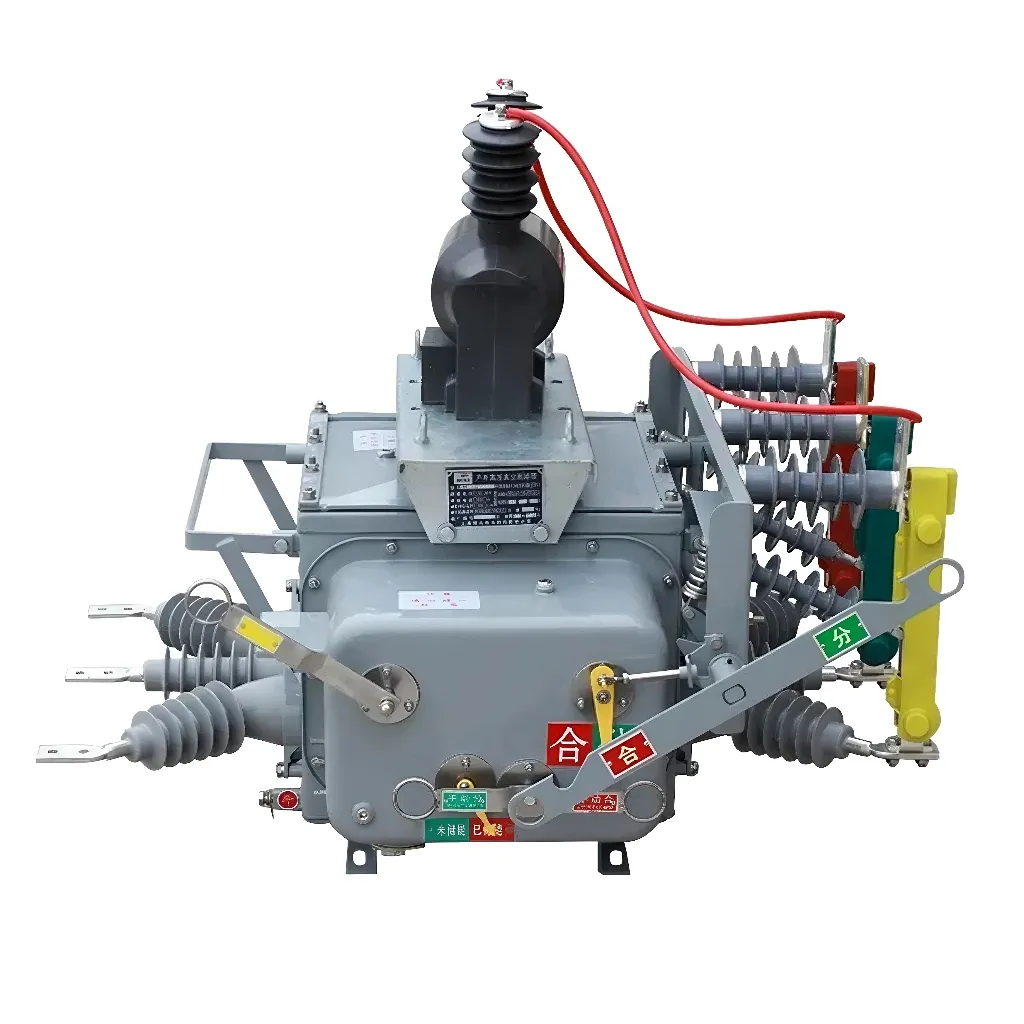
Introduction to Vacuum Circuit Breaker Nameplates
A vacuum circuit breaker is one of the most important components in modern electrical systems, ensuring reliable power protection and interruption. Every Vacuum circuit breaker comes with a detailed nameplate that provides crucial technical specifications for safe and efficient operation. Understanding how to read a vacuum circuit breaker nameplate helps engineers, technicians, and operators select the right equipment and ensure compliance with performance requirements.
Importance of a Vacuum Circuit Breaker Nameplate
The nameplate on a vacuum circuit breaker is like its identity card. It contains all the necessary data such as rated voltage, current, frequency, breaking capacity, insulation level, and manufacturing details. Knowing how to interpret these details allows users to correctly match a vacuum circuit breaker with the intended system and avoid potential electrical issues. It also helps in maintenance, troubleshooting, and replacement processes.
Key Details Found on a Vacuum Circuit Breaker Nameplate
A vacuum circuit breaker nameplate typically includes the following information:
- Manufacturer’s name and model number
- Rated voltage
- Rated current
- Frequency
- Rated short-circuit breaking current
- Making capacity
- Rated insulation level
- Operating mechanism type
- Serial number and manufacturing date
Each parameter is essential for ensuring that the vacuum circuit breaker is compatible with the system’s voltage, load, and environmental conditions.
Understanding Rated Voltage on a Vacuum Circuit Breaker Nameplate
The rated voltage is one of the first parameters shown on the vacuum circuit breaker nameplate. It represents the maximum voltage at which the breaker can safely operate. For example, a vacuum circuit breaker rated at 12 kV can be used in systems operating at or below that voltage. Selecting a vacuum circuit breaker with the correct voltage rating prevents insulation breakdown and ensures safe operation.
Interpreting Rated Current on a Vacuum Circuit Breaker Nameplate
The rated current indicates the maximum continuous current the vacuum circuit breaker can carry without overheating. Common rated currents for vacuum circuit breakers include 630A, 1250A, and 2500A. It is important to ensure that the vacuum circuit breaker chosen matches or exceeds the load current of the circuit to maintain reliability and prevent damage.
Short-Circuit Breaking and Making Capacity
One of the most important aspects of a vacuum circuit breaker nameplate is the rated short-circuit breaking current. This specifies the maximum fault current the breaker can safely interrupt without mechanical or electrical failure. Similarly, the making capacity shows the maximum current the vacuum circuit breaker can close onto during fault conditions. Choosing a vacuum circuit breaker with sufficient breaking and making capacity is vital for system safety and durability.
Rated Frequency and Insulation Level
The rated frequency, typically 50Hz or 60Hz, must match the supply frequency of the system. Using a vacuum circuit breaker with the correct frequency ensures synchronization and stable operation. The insulation level indicates the dielectric strength of the vacuum circuit breaker, ensuring that it can withstand high voltages and transient overvoltages without flashovers or insulation failure.
Understanding the Type and Model of the Vacuum Circuit Breaker
Every vacuum circuit breaker has a specific type and model number, usually indicated on the nameplate. This helps users identify the exact design, configuration, and mechanical mechanism of the vacuum circuit breaker. Manufacturers like Aierway provide detailed model codes that specify parameters such as rated voltage, rated current, and operating mechanism type, allowing easy selection and replacement.
The Role of Serial Number and Manufacturing Date
The serial number and manufacturing date on the vacuum circuit breaker nameplate provide traceability and quality assurance. These details help maintenance personnel track production batches and warranty periods. In case of upgrades or technical support, referring to the vacuum circuit breaker nameplate ensures accurate identification.
How to Match the Vacuum Circuit Breaker with System Requirements
When reading a vacuum circuit breaker nameplate, technicians must ensure that the rated voltage and current correspond to the system’s nominal parameters. The short-circuit breaking capacity should exceed the system’s prospective fault current. Additionally, the insulation level should match the environmental and operational conditions. Selecting a vacuum circuit breaker based on these nameplate parameters guarantees safe and efficient power distribution.
Common Mistakes When Reading a Vacuum Circuit Breaker Nameplate
Many users misinterpret the rated current as the breaking capacity or ignore the making capacity values. Others fail to check the insulation level or frequency, leading to operational issues. It is essential to carefully analyze every parameter on the vacuum circuit breaker nameplate to avoid mismatched installations or performance failures.
Example of Reading a Vacuum Circuit Breaker Nameplate
Consider a vacuum circuit breaker with the following specifications:
- Rated Voltage: 12kV
- Rated Current: 1250A
- Frequency: 50Hz
- Breaking Capacity: 25kA
- Insulation Level: 28/75kV
This indicates that the vacuum circuit breaker can operate safely in a 12kV system, handle up to 1250A continuous current, and interrupt fault currents up to 25kA. Such details ensure that the vacuum circuit breaker functions effectively in medium-voltage networks.
Benefits of Understanding the Vacuum Circuit Breaker Nameplate
Properly reading and understanding the vacuum circuit breaker nameplate improves equipment selection, enhances safety, and extends service life. It allows engineers to ensure that the vacuum circuit breaker operates within its rated limits, preventing overloads and insulation failures. Additionally, it simplifies maintenance and replacement, reducing downtime and costs.
Conclusion
Reading a vacuum circuit breaker nameplate is an essential skill for anyone involved in electrical system design, operation, or maintenance. The information provided helps users ensure compatibility, safety, and performance reliability. At Aierway, each vacuum circuit breaker is equipped with a detailed nameplate that follows international standards, ensuring customers can easily interpret and apply the data. By mastering the details on a vacuum circuit breaker nameplate, professionals can guarantee efficient system protection and long-term operational success.





